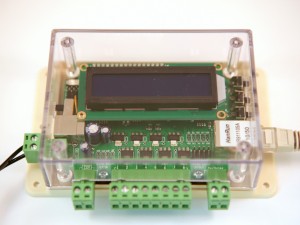OpenSprinkler Firmware Update
The OpenSprinkler firmware is regularly updated to include new features and functionality. You can update the firmware at any time by reflashing the microcontroller (MCU). The source code is completely open and free. You are welcome to modify it and share your contributions through GitHub.
Upload a Precompiled Firmware
- OpenSprinkler Firmware Updater 2.0 (cross-platform, for OpenSprinkler Hardware 2.x only)
(Updated Sep 27, 2014: new Qt-based GUI, does not require Java any more). - OpenSprinkler Firmware Updater 1.0 (for OpenSprinkler Hardware 1.x only)
- Linux and Mac users do not need to install any driver.
- For Windows: please install the Zadig fully-signed driver (choose to install libusb-win32 driver). This works for OpenSprinkler 1.x, 2.0, 2.1, and for all versions of Windows.
Compile and Modify the Source Code
If you wish to modify the OpenSprinkler source code and customize the software, please follow the instructions below. The F.A.Q. page contains some basic information to get you started. The source code has been documented with comments. It is your responsibility to understand the code if you wish to make changes. We will try our best to answer your questions but cannot respond to all requests.
The default sudo user of the virtual Linux is opensprinkler and the password is the same as the user name.
If you wish to install everything from scratch:
- For OpenSprinkler 1.x generation hardware, please follow instructions archived here: http://rayshobby.net/?page_id=6210
- For OpenSprinkler 2.x generation hardware, please follow instructions archived here: http://rayshobby.net/?page_id=6619
